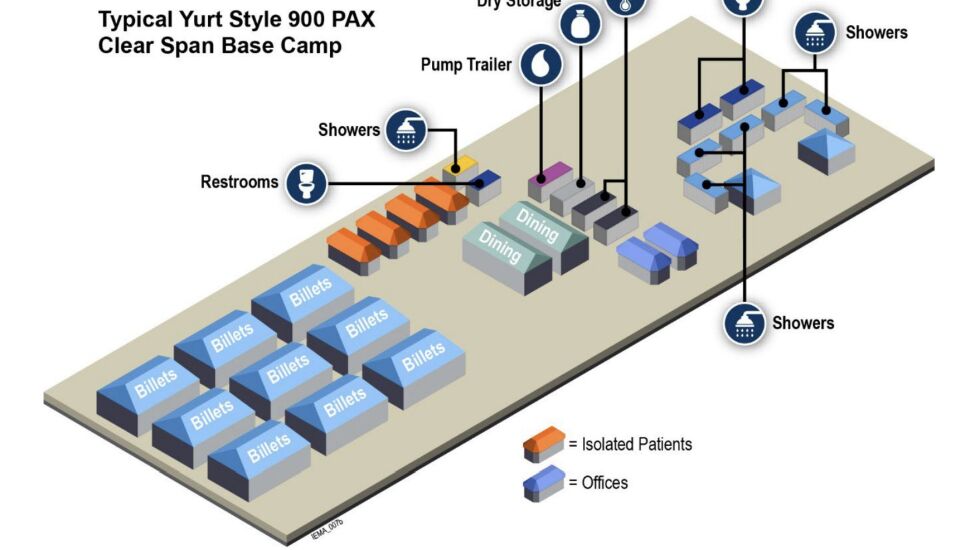
Chicago has taken the first concrete step to deliver on Mayor Brandon Johnson’s controversial plan to get more than 2,000 migrants off the floors of police stations, O’Hare and Midway airports and into giant tent cities he prefers to call “winterized base camps” before temperatures plummet.
Piggybacking onto an existing state procurement, the city has signed a $29.3 million contract with GardaWorld Federal Services LLC for “migrant temporary housing.”
“The purpose of this Purchase Order is to allow the City to purchase from the State Contract temporary housing solutions and related services … to provide critical services to asylum seekers,” according to the contract, signed Sept. 12.
“The City reserves the right to utilize other contractors and/or City employees at any sites set up as temporary housing solutions pursuant to this Purchase Order.”
The contract mentions no specific sites for the base camps, and none has been chosen, according to mayoral press secretary Ronnie Reese.
In fact, the only specific site mentioned so far —115th and Halsted streets — has faced opposition from local residents.
The contract also includes no specific timetable for erecting the tent cities.
“It’s got to be done pretty quickly if it’s gonna get done before the weather breaks,” Reese told the Sun-Times. “The goal is to decompress the police stations as soon as possible. We know that’s not sustainable.”
During briefings this month, City Council members were shown pictures of what the giant tents would look like.
They include frames, rows of cots, mess halls and attached heating and air-conditioning units. Trailerlike portable toilets were parked adjacent to the tents.
Photographs included in the GardaWorld contract look somewhat different.

The rendering of the so-called “soft-sided exterior temporary housing” had a barracks-like appearance.
“Within each ClearSpan, we will include cots and linens. … Additionally, with both our outdoors and indoors lodging options, we are able to provide a morale, welfare and recreation (MWR) area either within the hard-sided structure or as an exterior tent. This would be a tented facility with lights, power, HVAC and flooring. This area would also include tables and chairs for reading and doing personal paperwork,” the contract states.
“We will work with IEMA( the Illinois Emergency Management Agency) to determine other requirements, to potentially include: television capabilities for inhabitants to relax, cell phone charging stations as well as numerous board games, magazines and newspapers,” the contract continues.
“For both outdoors and indoors lodging options, we also provide a covered Sanitation Tent that is located just outside of the main facility with contained walkways between all trailers provided to the main facility; this will be designed upon our arrival at the site. This Sanitation Tent includes all required hand wash, restroom, shower and laundry facilities and is also ADA compliant. Additionally, we provide an exterior kitchen trailer, with serving lines and tables and chairs for dining within the main facility (for either hard-sided or soft-sided lodging), that provides the required meals for guests.”

Chicago faces a $538 million budget shortfall in 2024, with $200 million of it tied to the migrant crisis. The parade of buses filled with migrants — more than 14,000 and counting—will have cost taxpayers more than $255.7 million by Dec. 31 and well over $300 million after Johnson forges ahead with his plan to create “winterized base camps, each filled with anywhere from 500 to 1,000 migrants.
Ald. Andre Vasquez (40th), chair of the City Council’s Committee on Immigration and Refugee Rights, said Wednesday he believes Chicago taxpayers would be better served if the city acquired abandoned buildings and redesigned them to house migrants.
At least then, he said, the city would have “something to show for it” when the crisis finally comes to an end.
“If we build tent cities,” Vasquez asked, “what will we do with them?”







